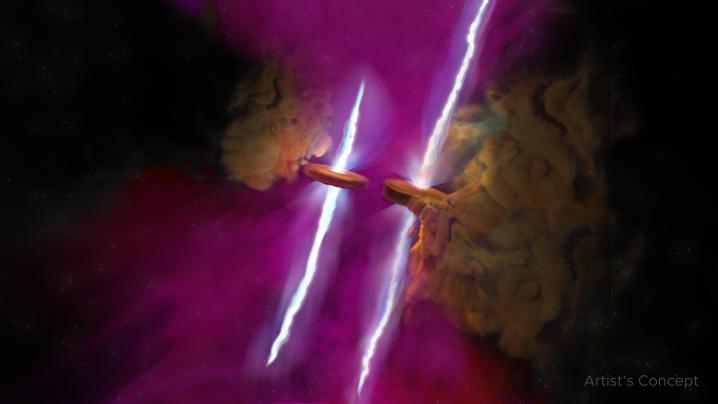
There are some regions and objects that become favorite targets for astronomers — often because they are nearby (and so easier to observe) and because they are a well-known example of an object like a stellar nursery or a black hole. But occasionally, even these well-known objects turn out to be hiding surprises. This was the case recently, when observations from the James Webb Space Telescope revealed that a particular star, WL 20S, in the frequently observed WL20 region, turned out not to be a single star at all, but actually a pair.
“What we discovered was absolutely wild,” said astronomer Mary Barsony in a statement. “We’ve known about star system WL20 for a long time. But what caught our attention is that one of the stars in the system appeared much younger than the rest. Using MIRI and ALMA together, we actually saw that this ONE star was TWO stars right next to each other. Each of these stars was surrounded by a disk, and each disc was emitting jets parallel to the other.”
The observations were made using Webb’s MIRI instrument and an array on the ground called ALMA, or the Atacama Large Millimeter/submillimeter Array. The two worked together as Webb observed the jets of material flying off from the stars, and ALMA observed the discs of material around them.
“The power of these two telescopes together is really incredible,” said another of the researchers, Mike Ressler of NASA’s Jet Propulsion Laboratory. “If we hadn’t seen that these were two stars, the ALMA results might have just looked like a single disk with a gap in the middle. Instead, we have new data about two stars that are clearly at a critical point in their lives, when the processes that formed them are petering out.”
The disks of material around each star could potentially be forming planets, while the jets are composed of streams of charged particles that are sent out from the poles of each star. As the jets are visible at the infrared wavelengths in which Webb operates, and the disks were visible in ALMA’s radio wavelengths, the two instruments were needed to work together to make this discovery.
“It’s amazing that this region still has so much to teach us about the life cycle of stars,” Ressler said. “I’m thrilled to see what else Webb will reveal.”
Editors’ Recommendations
Services Marketplace – Listings, Bookings & Reviews
